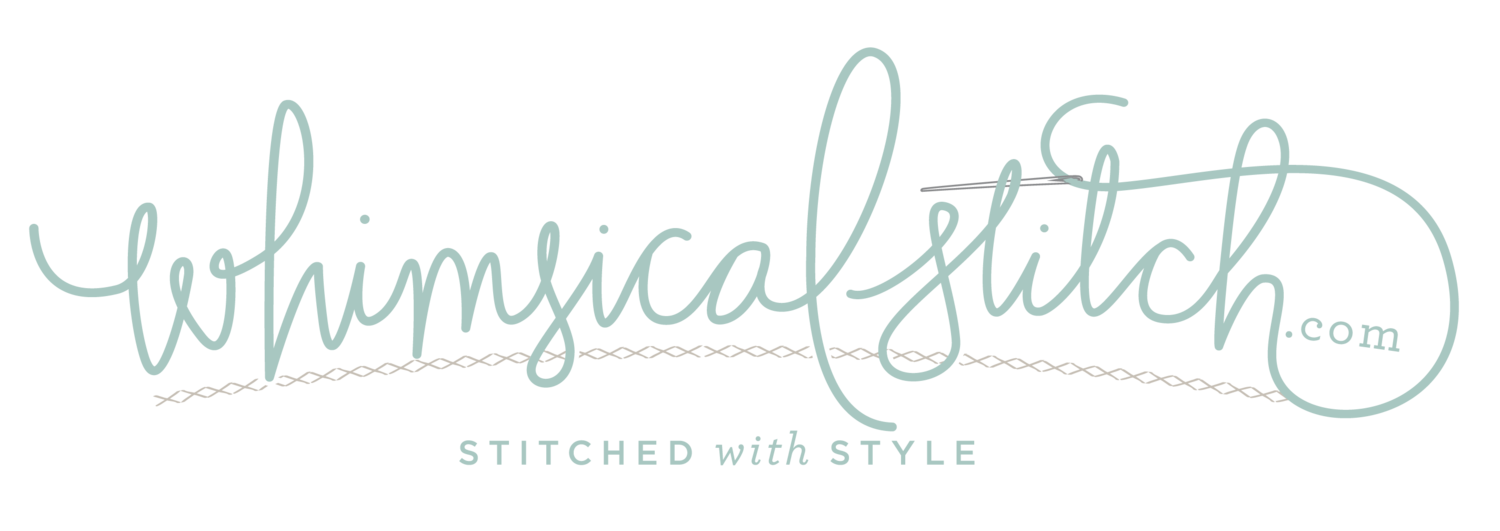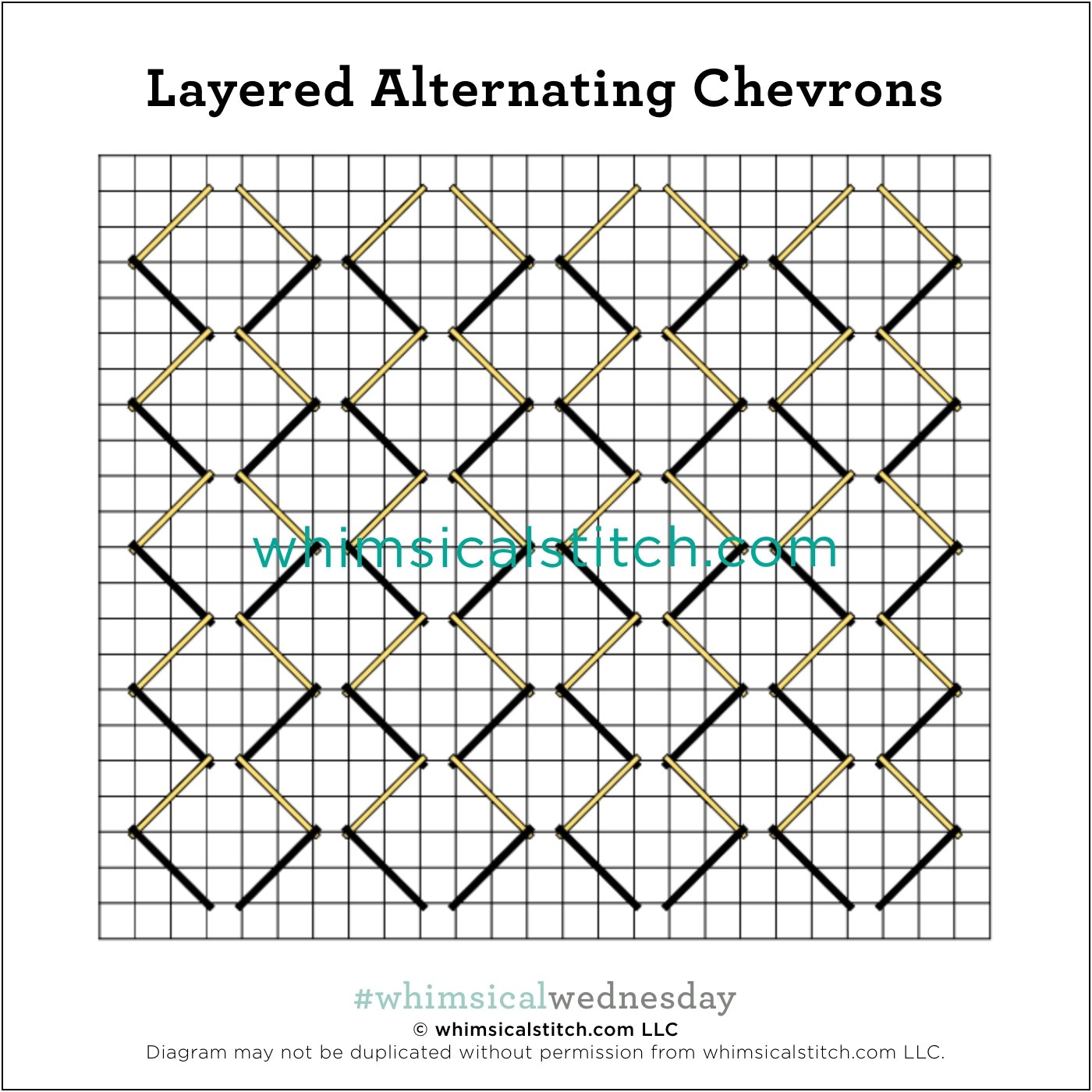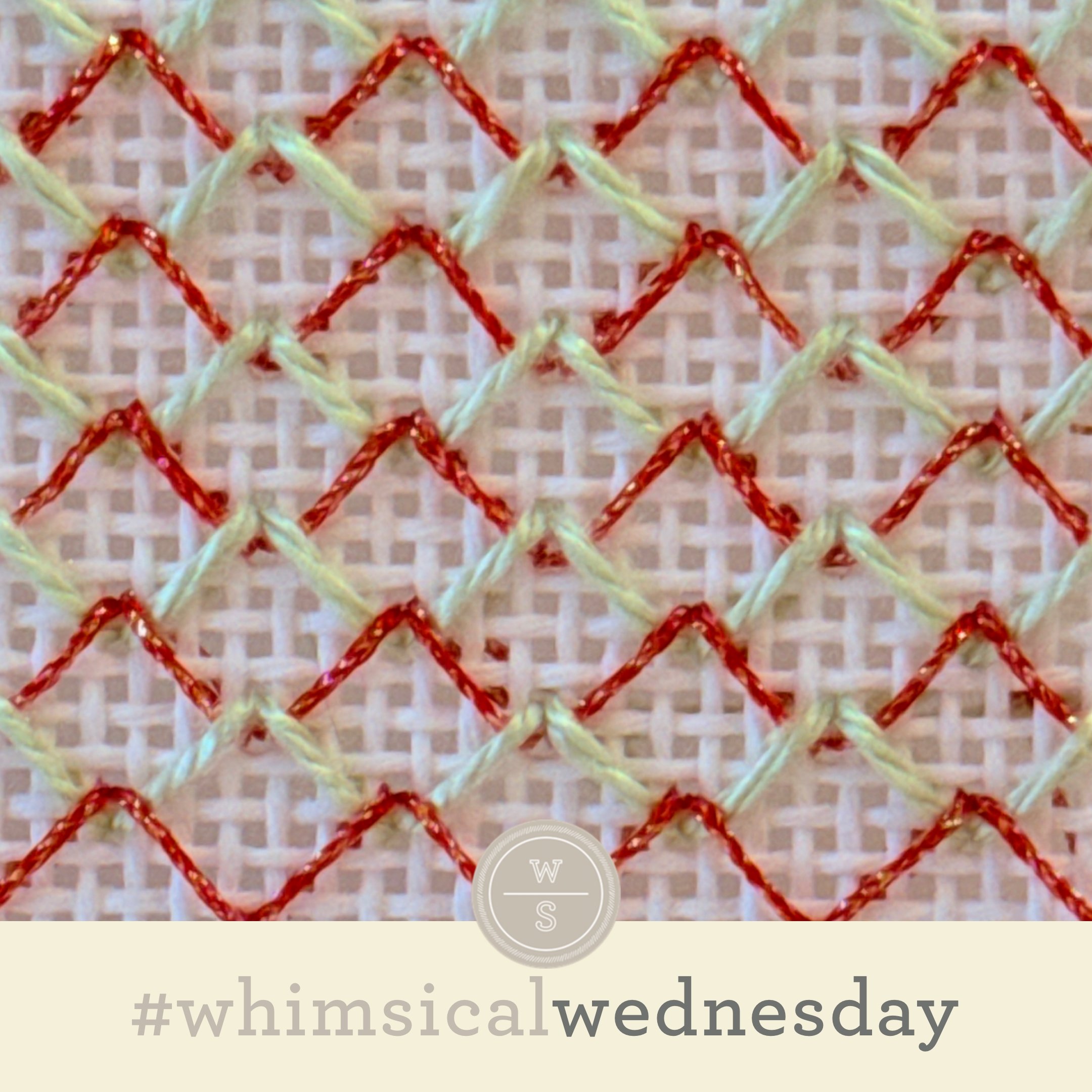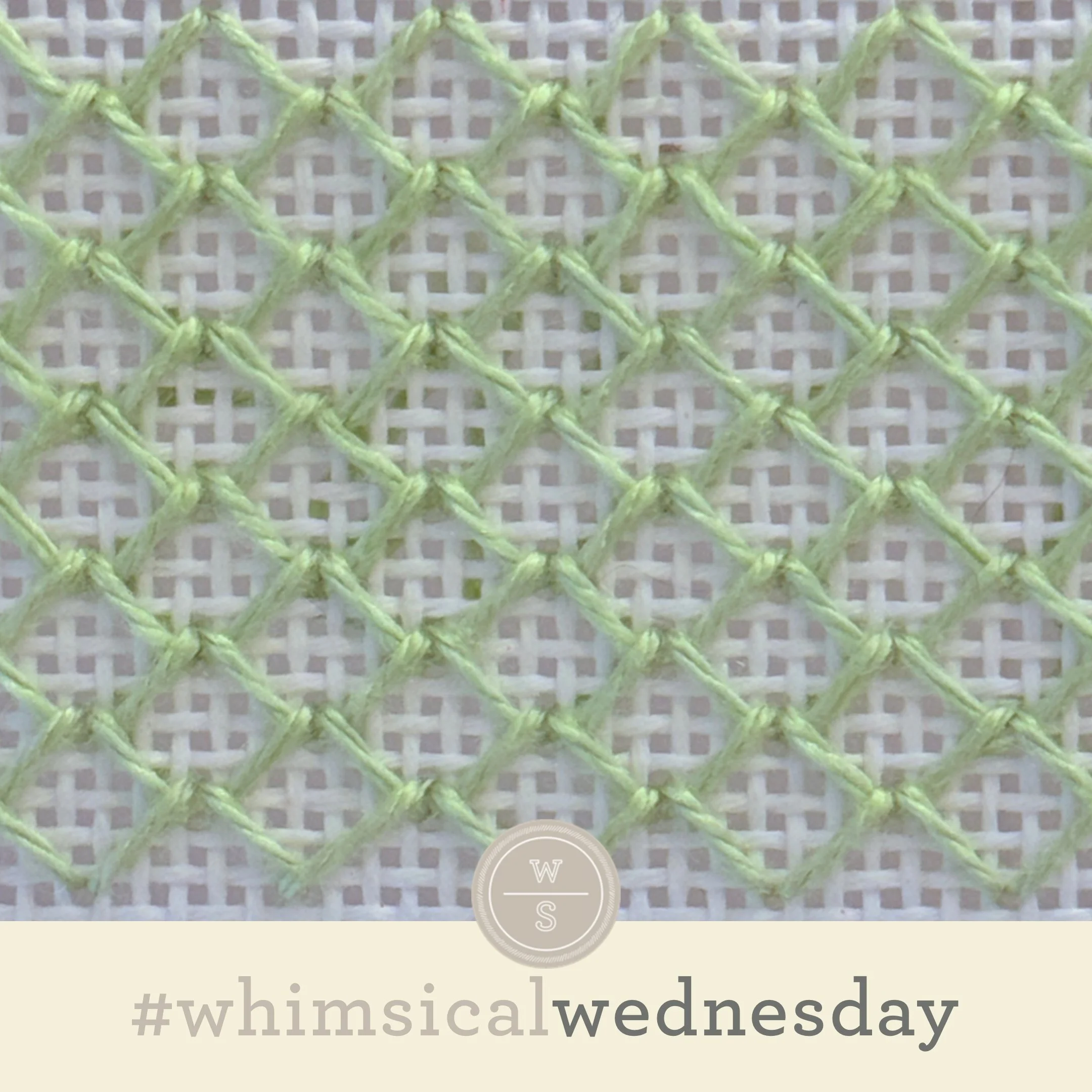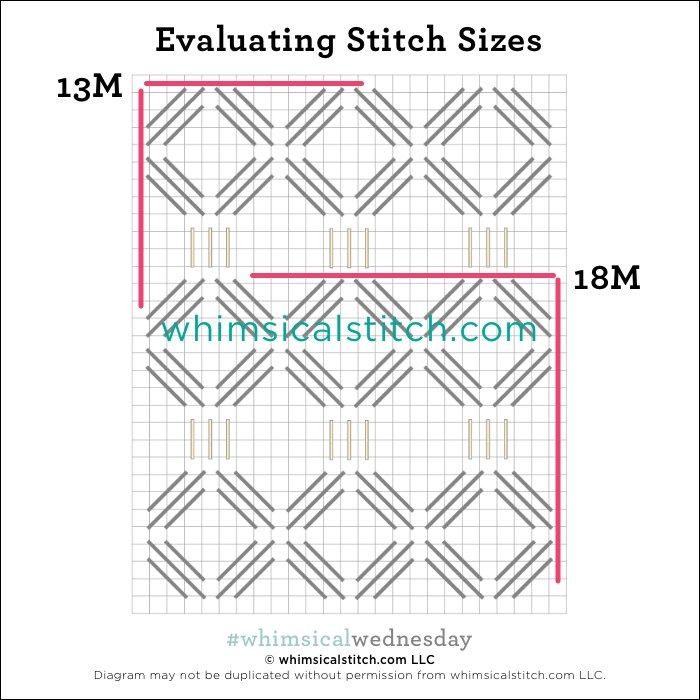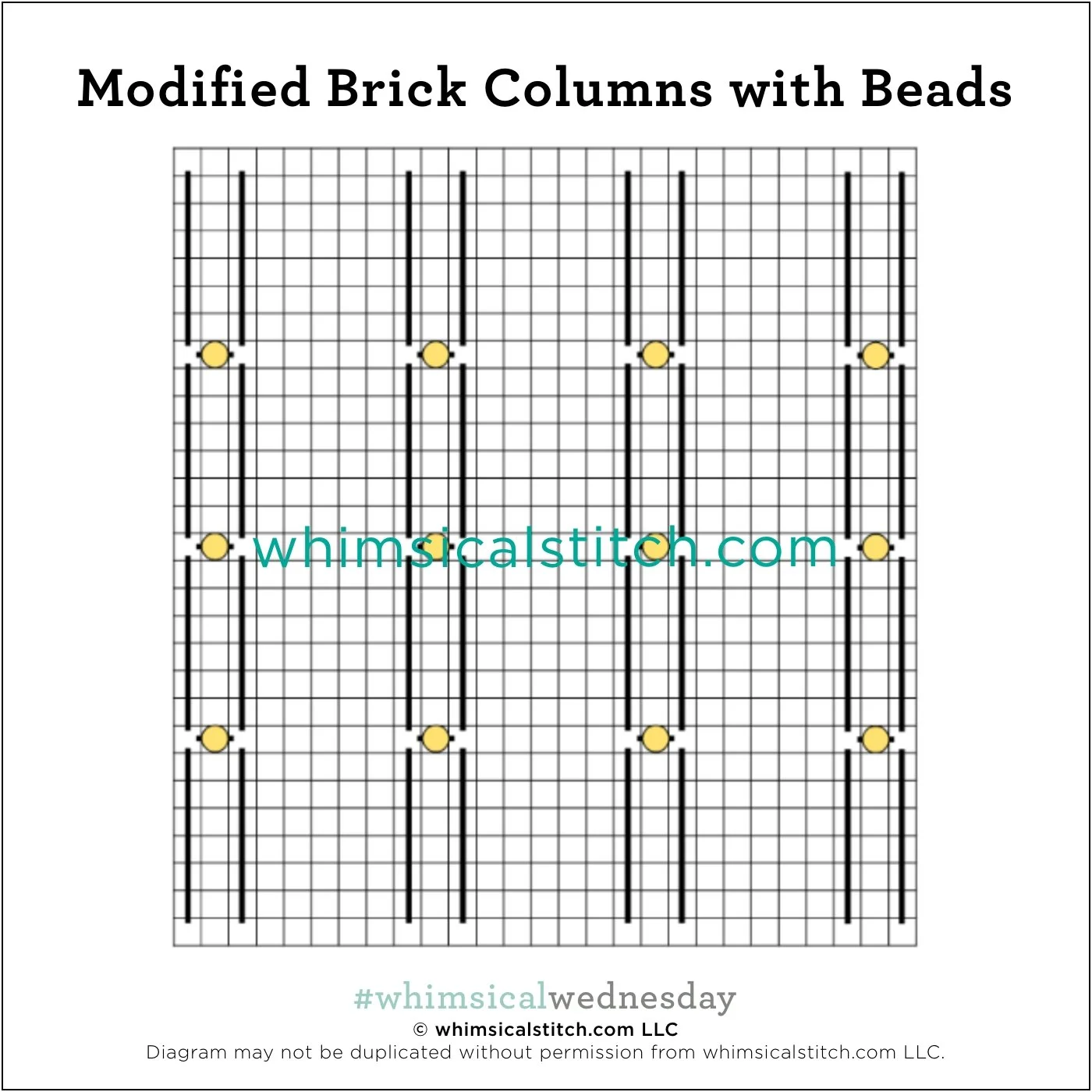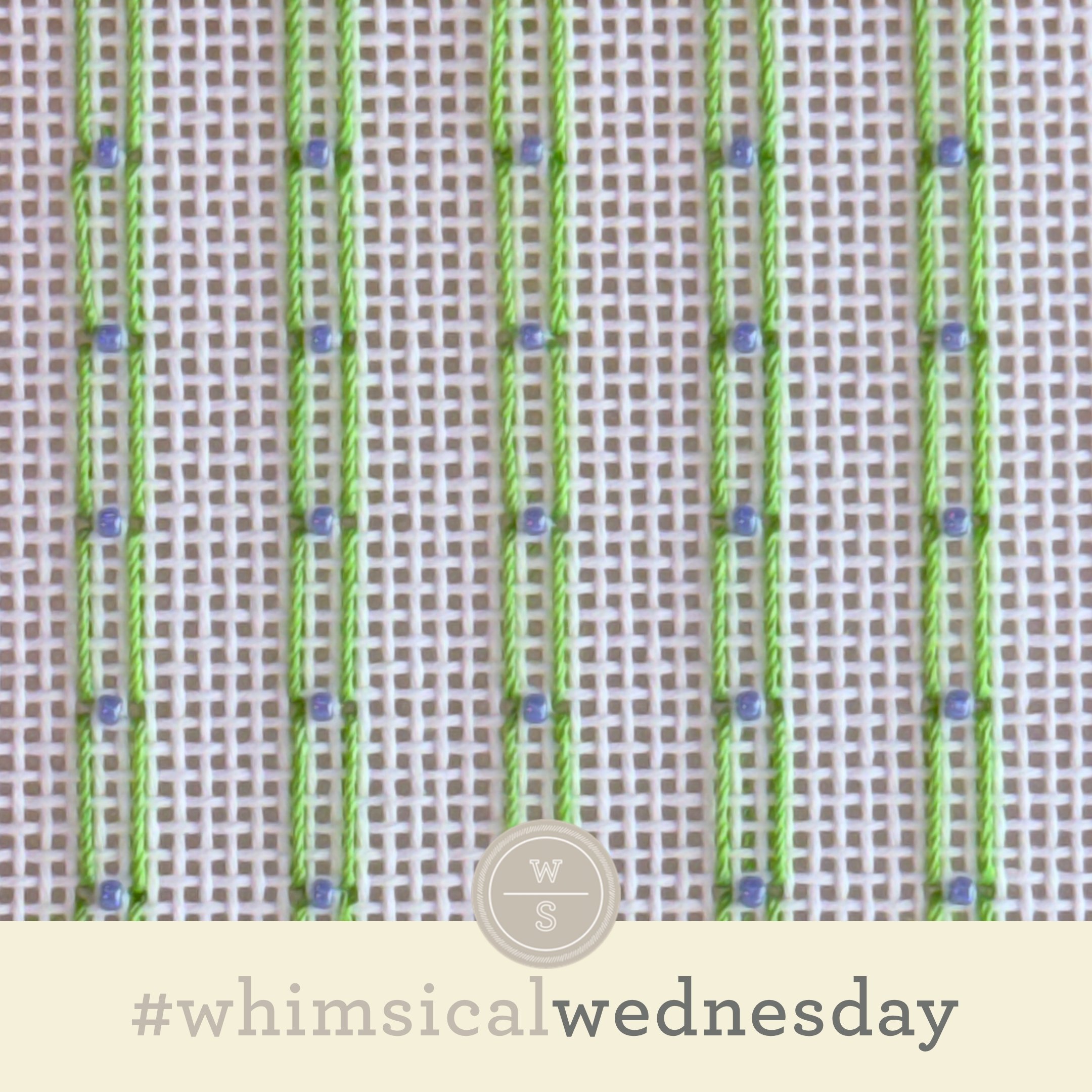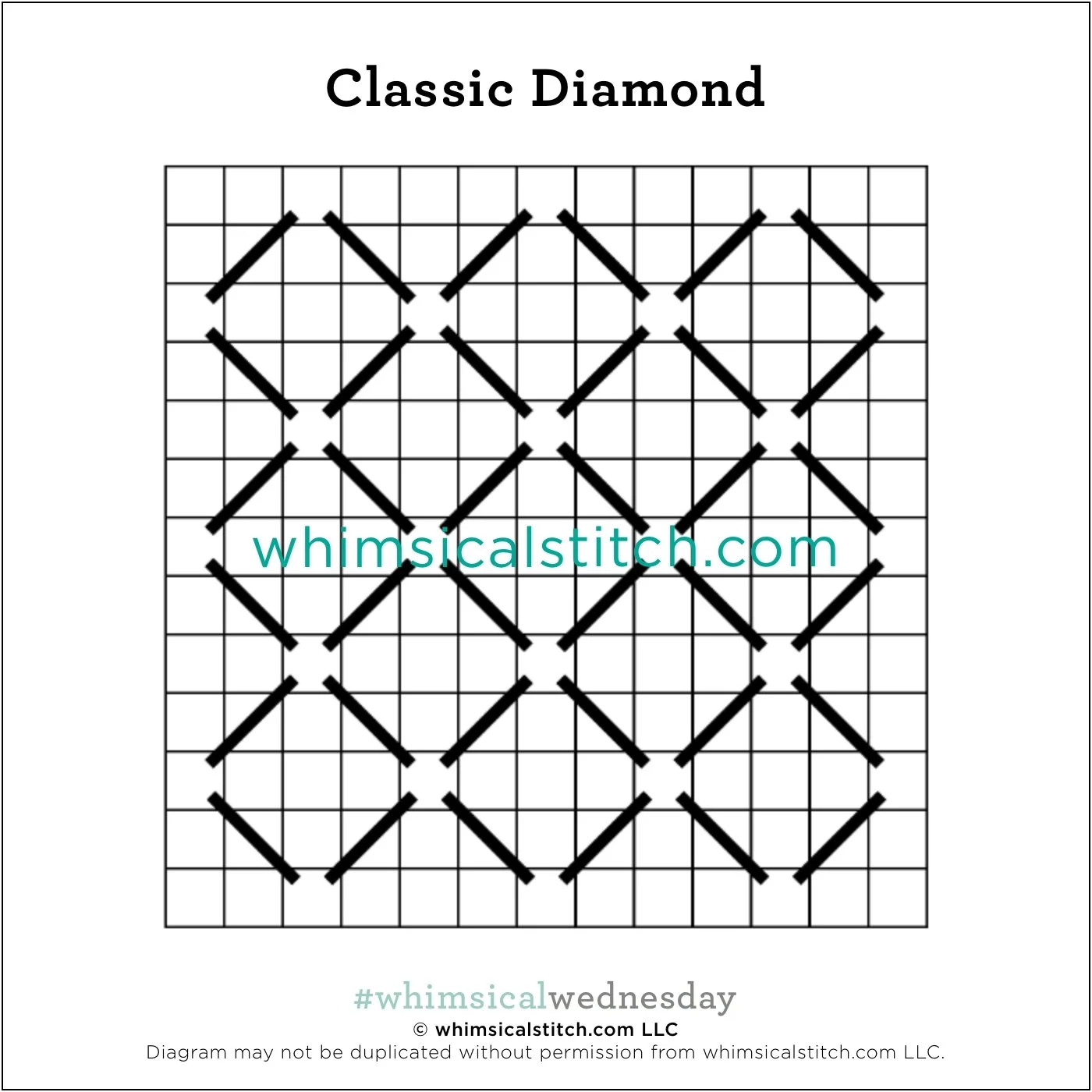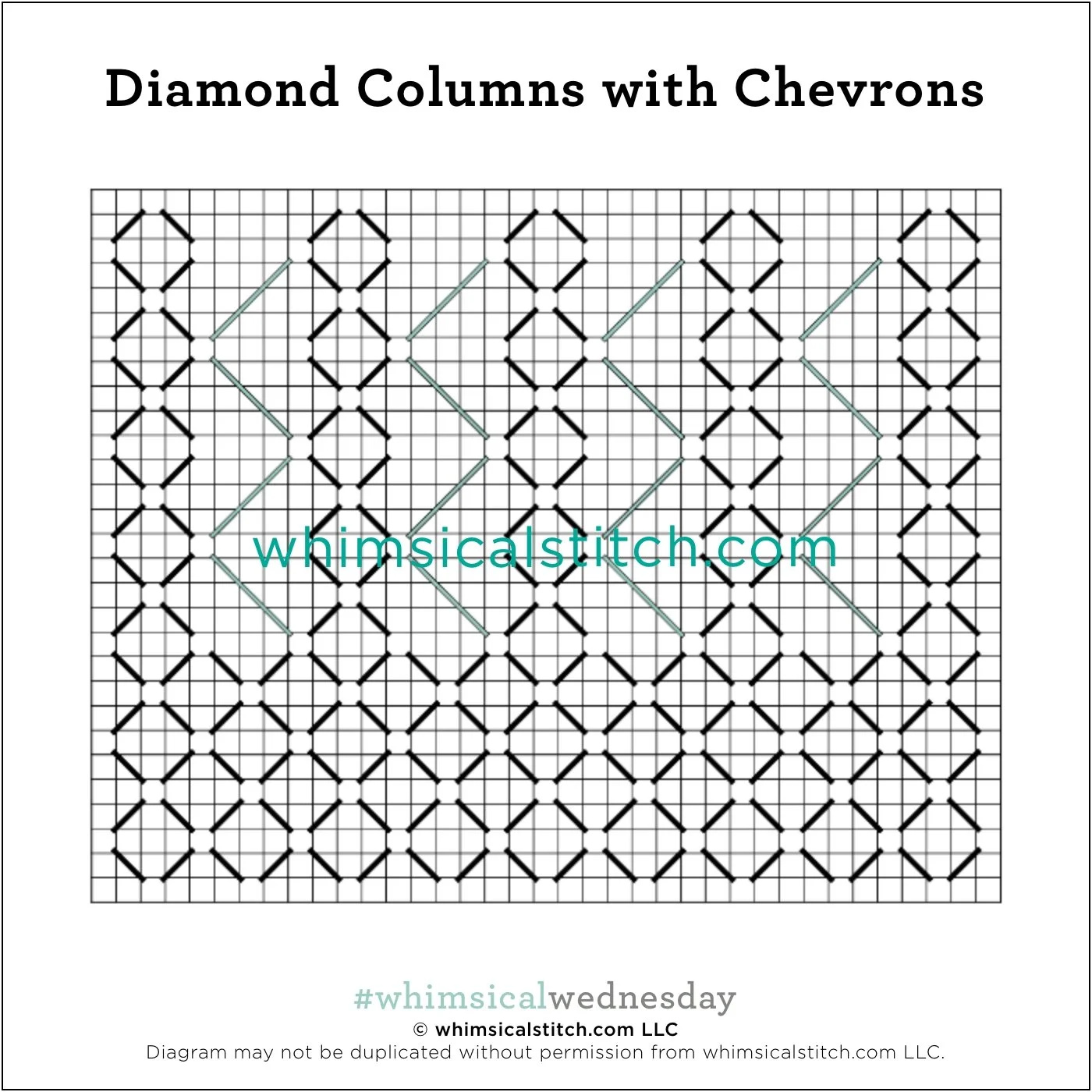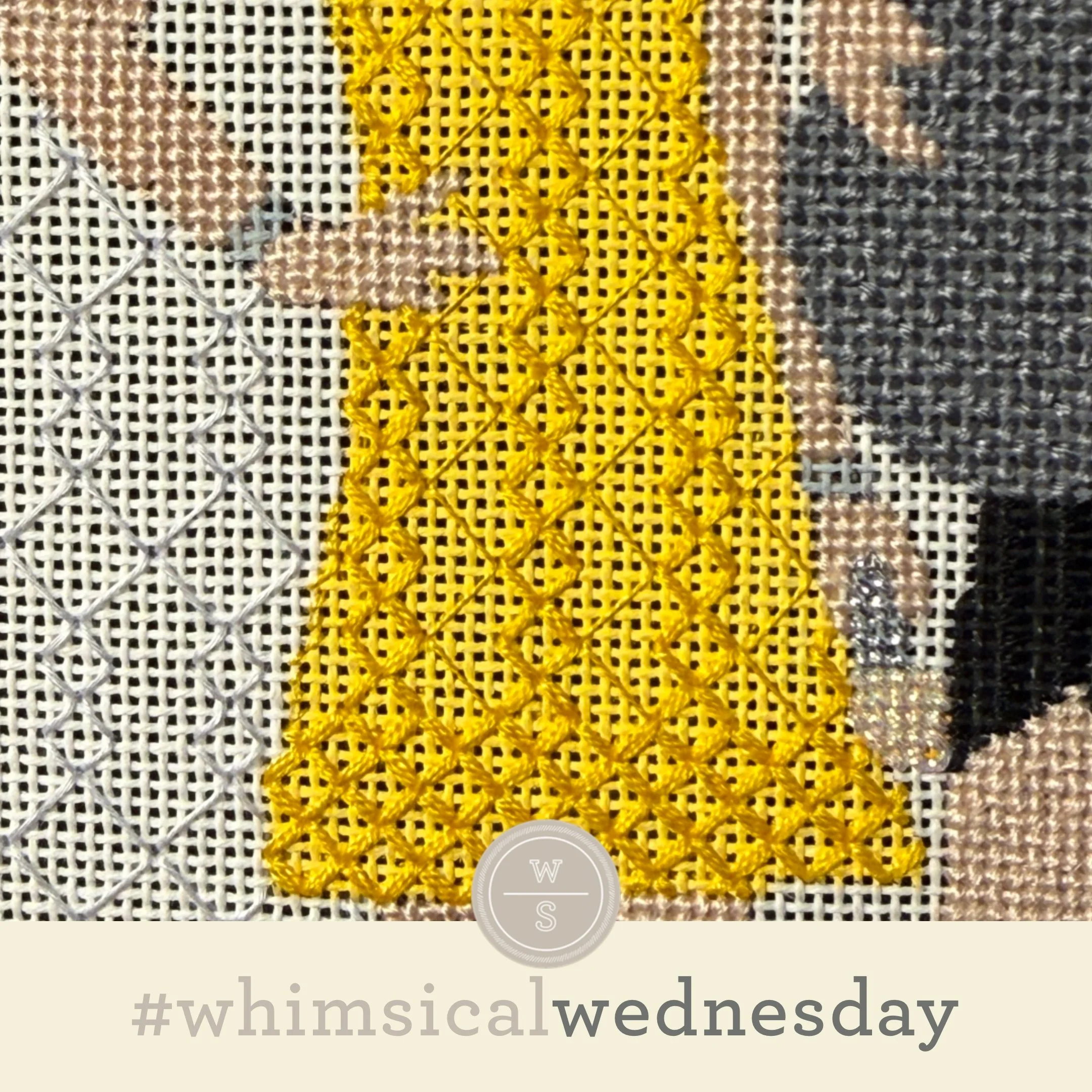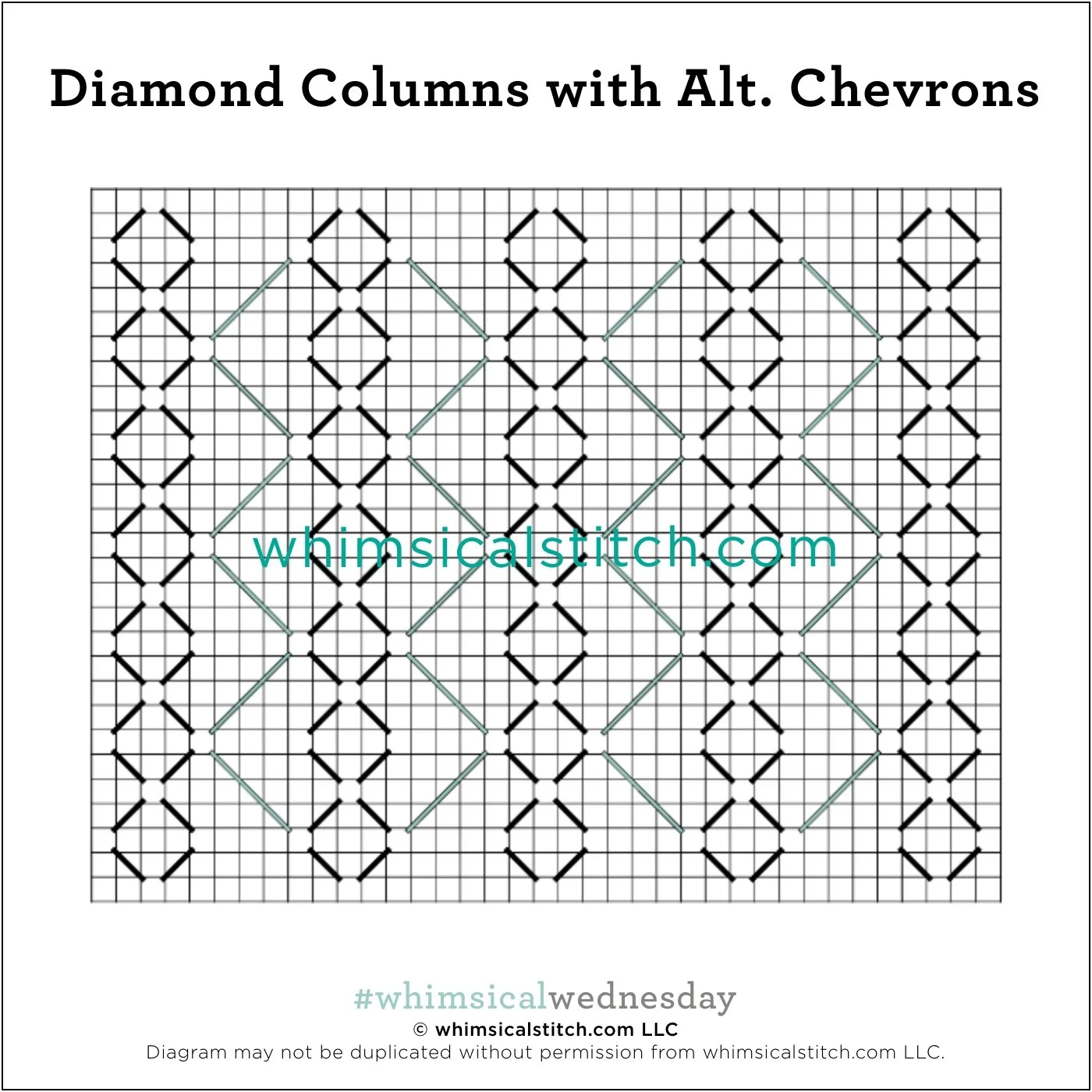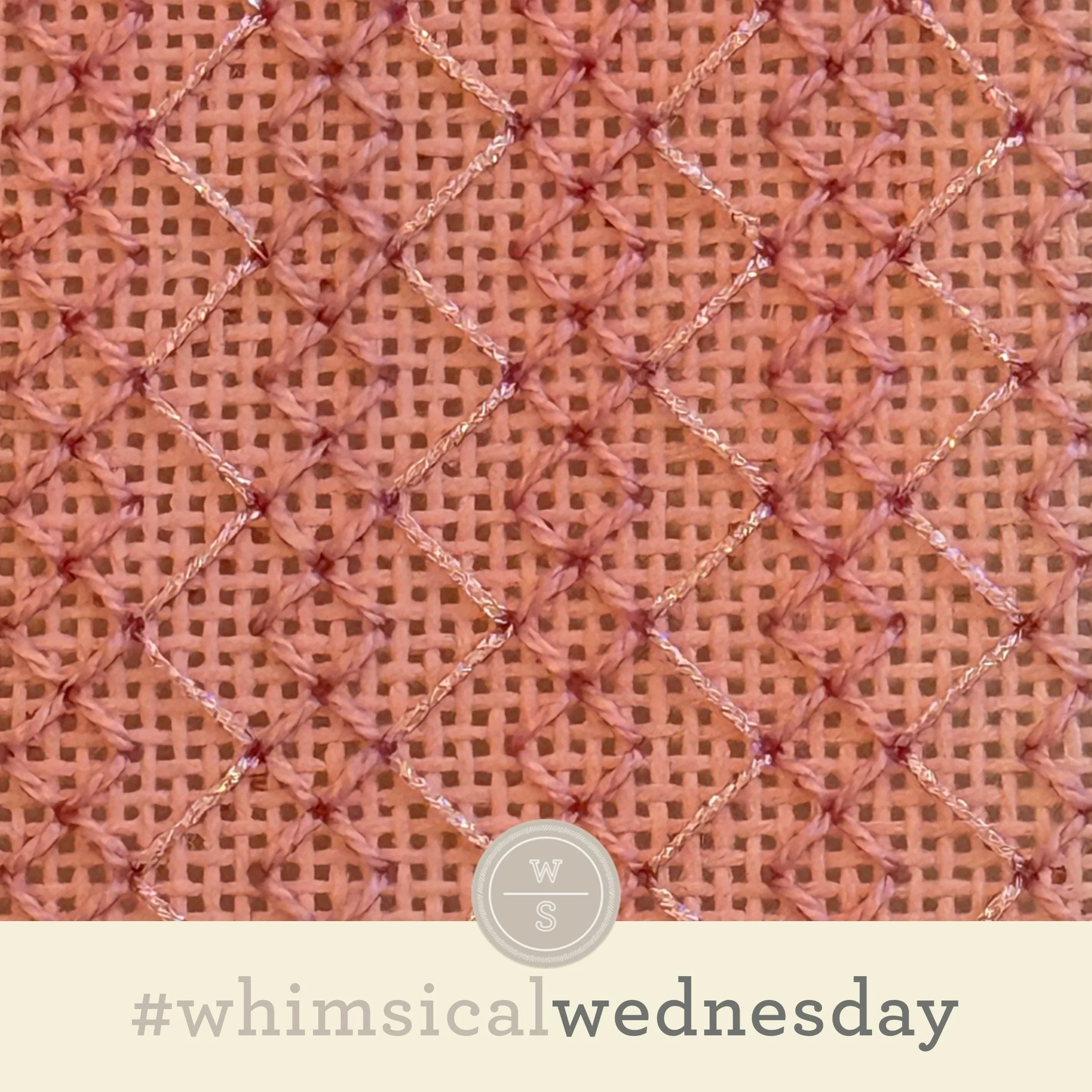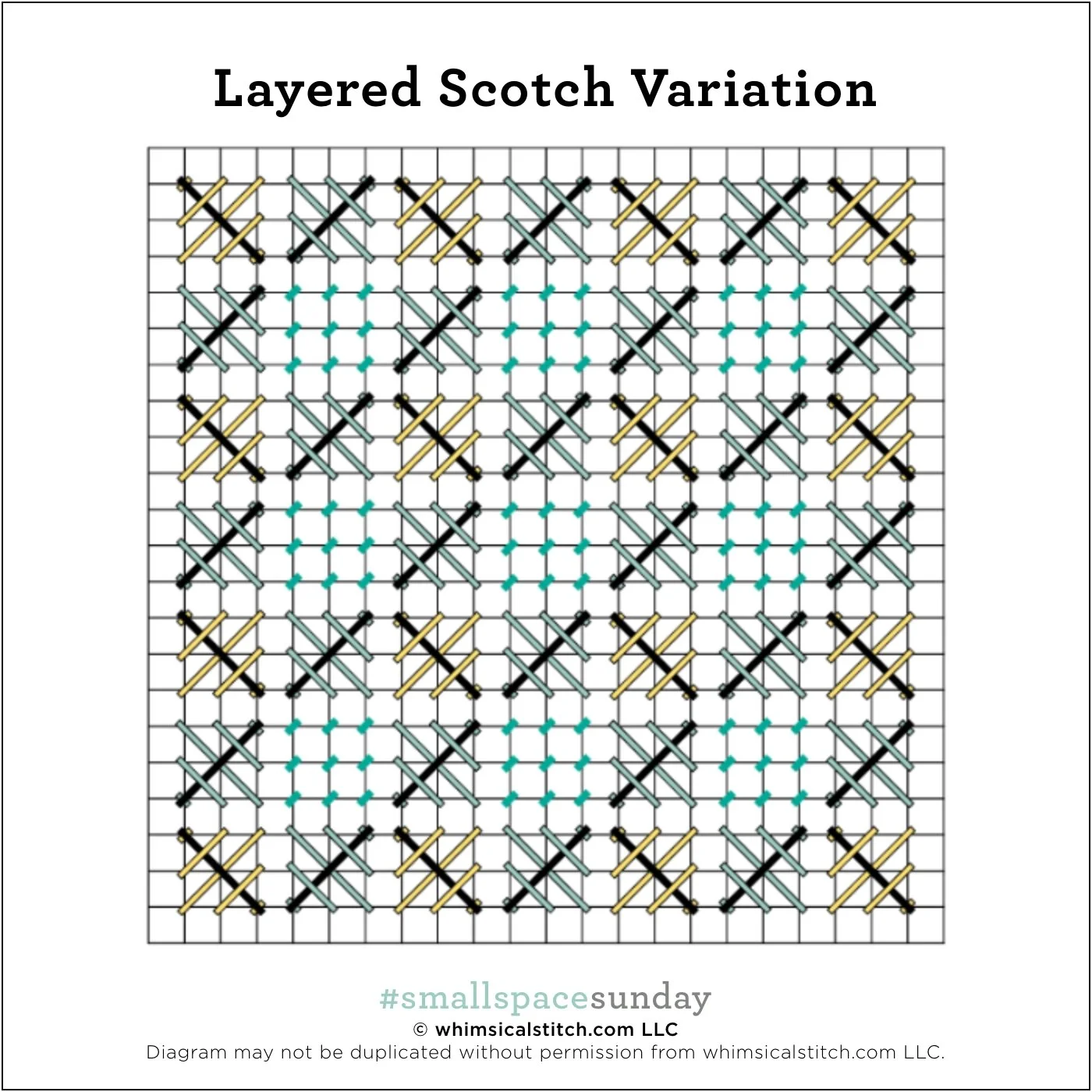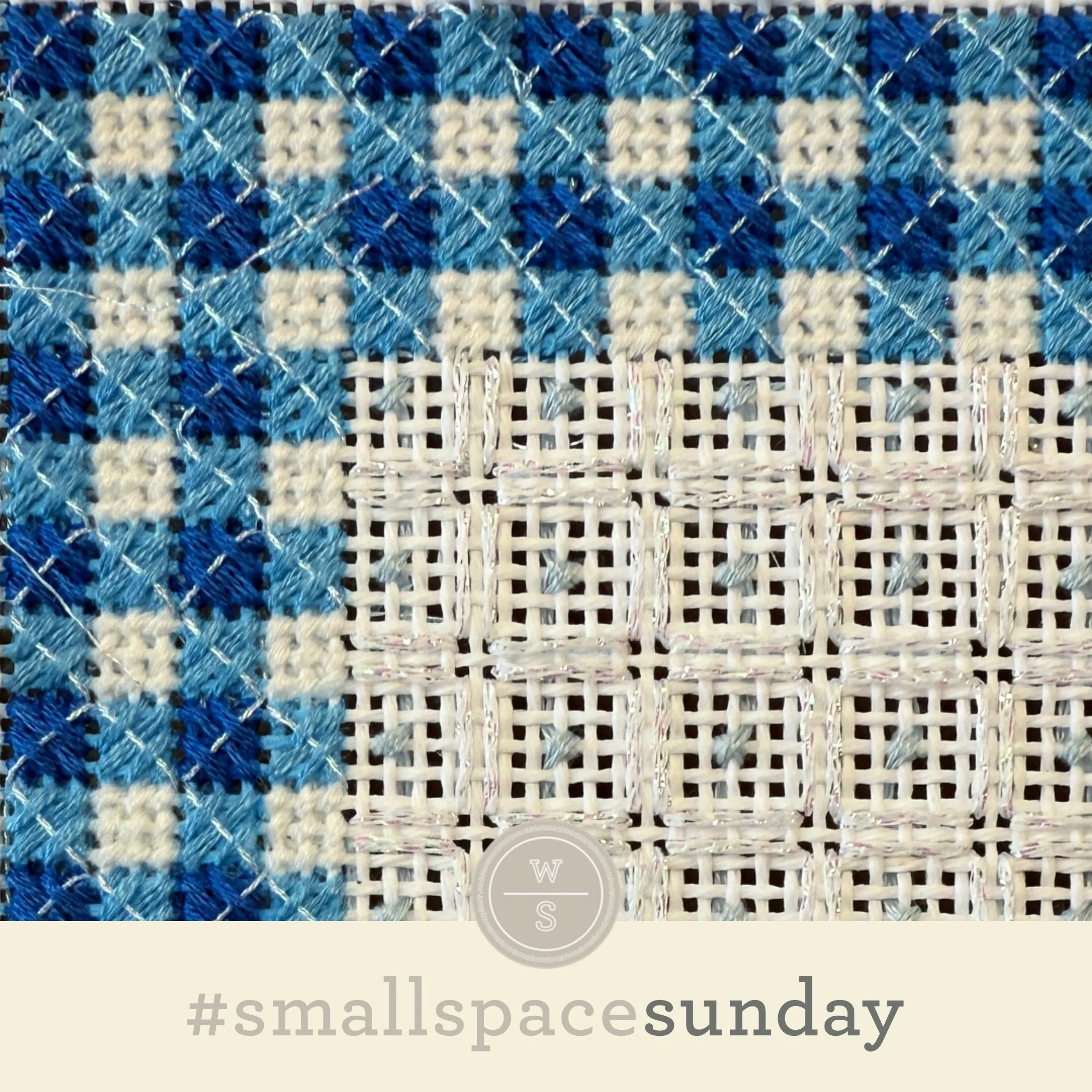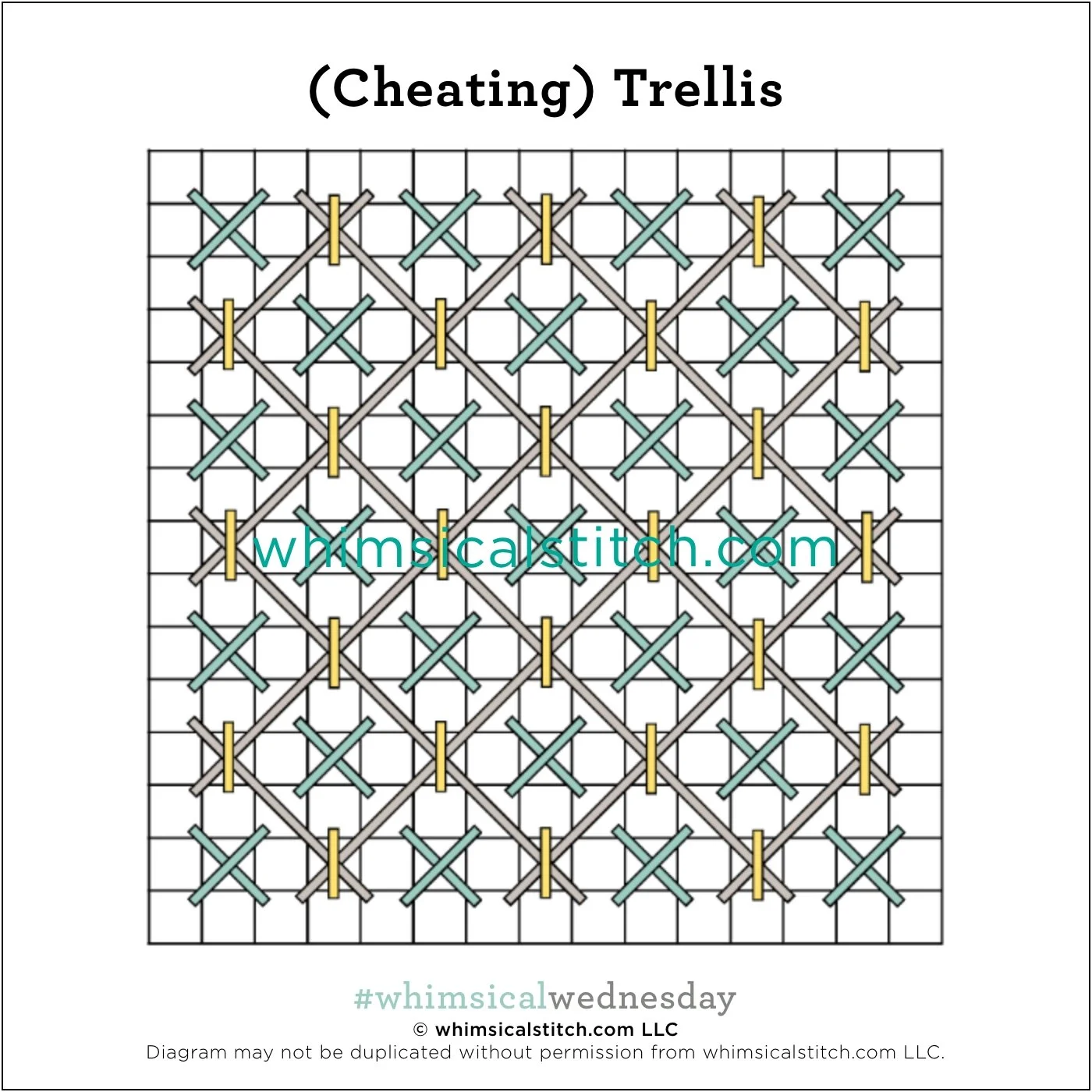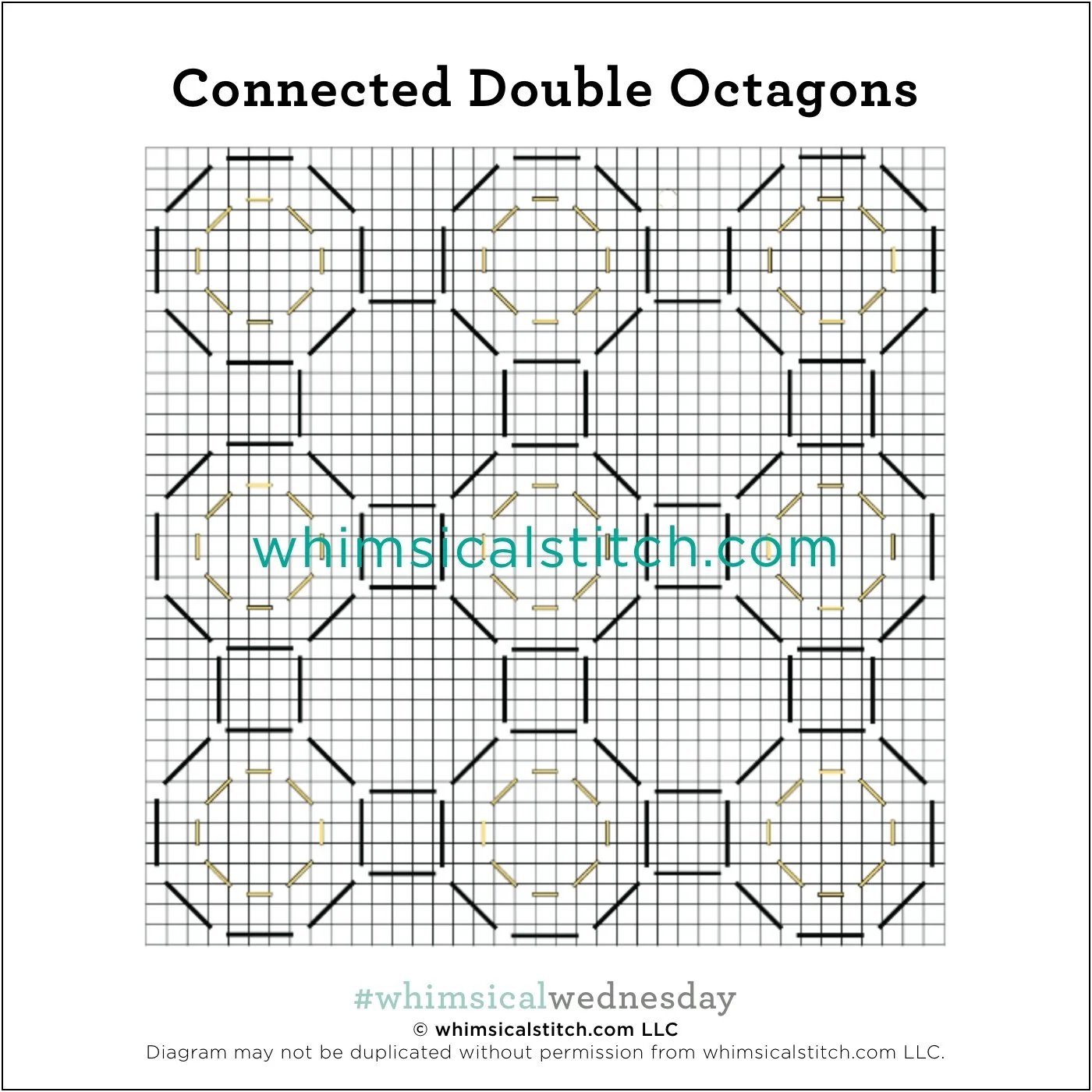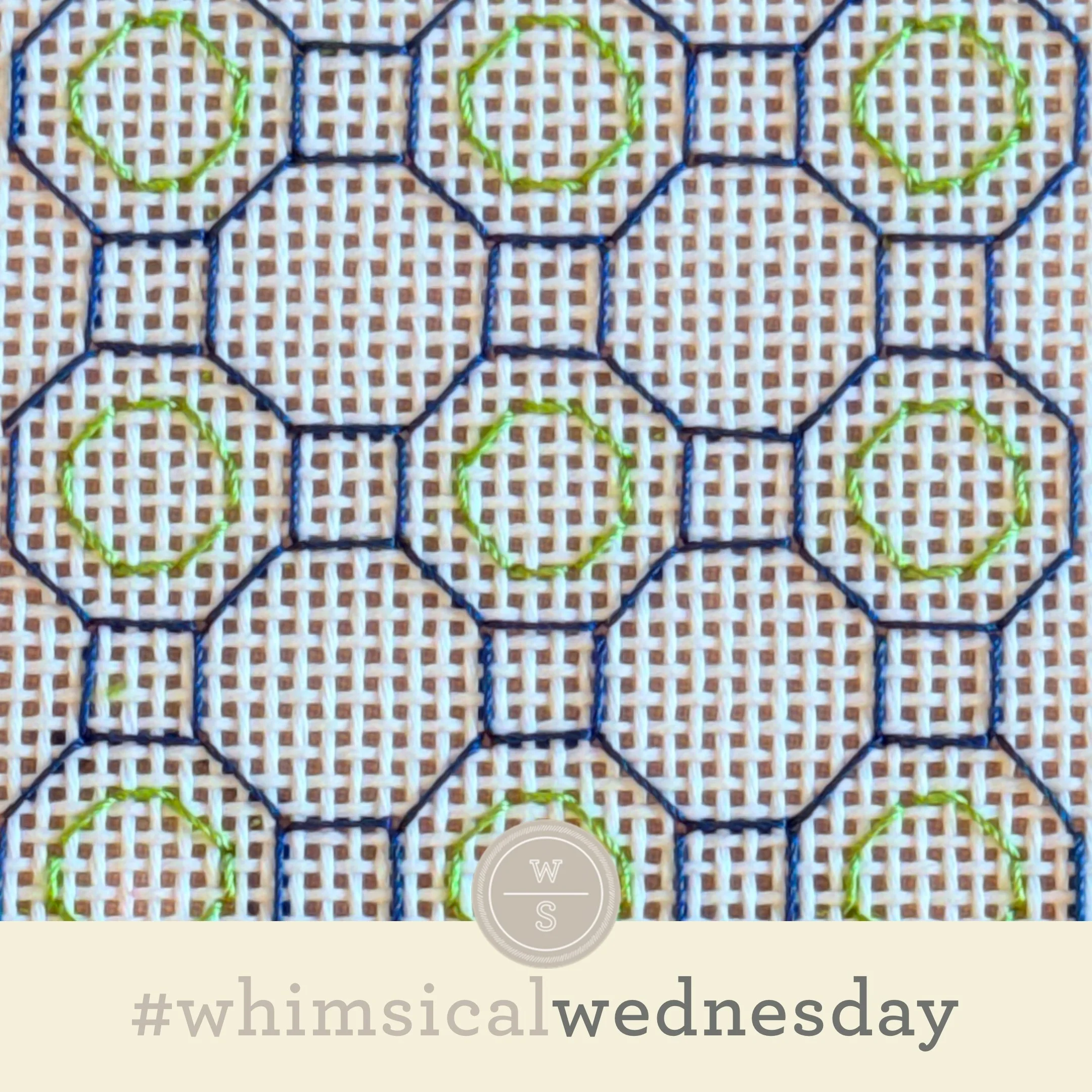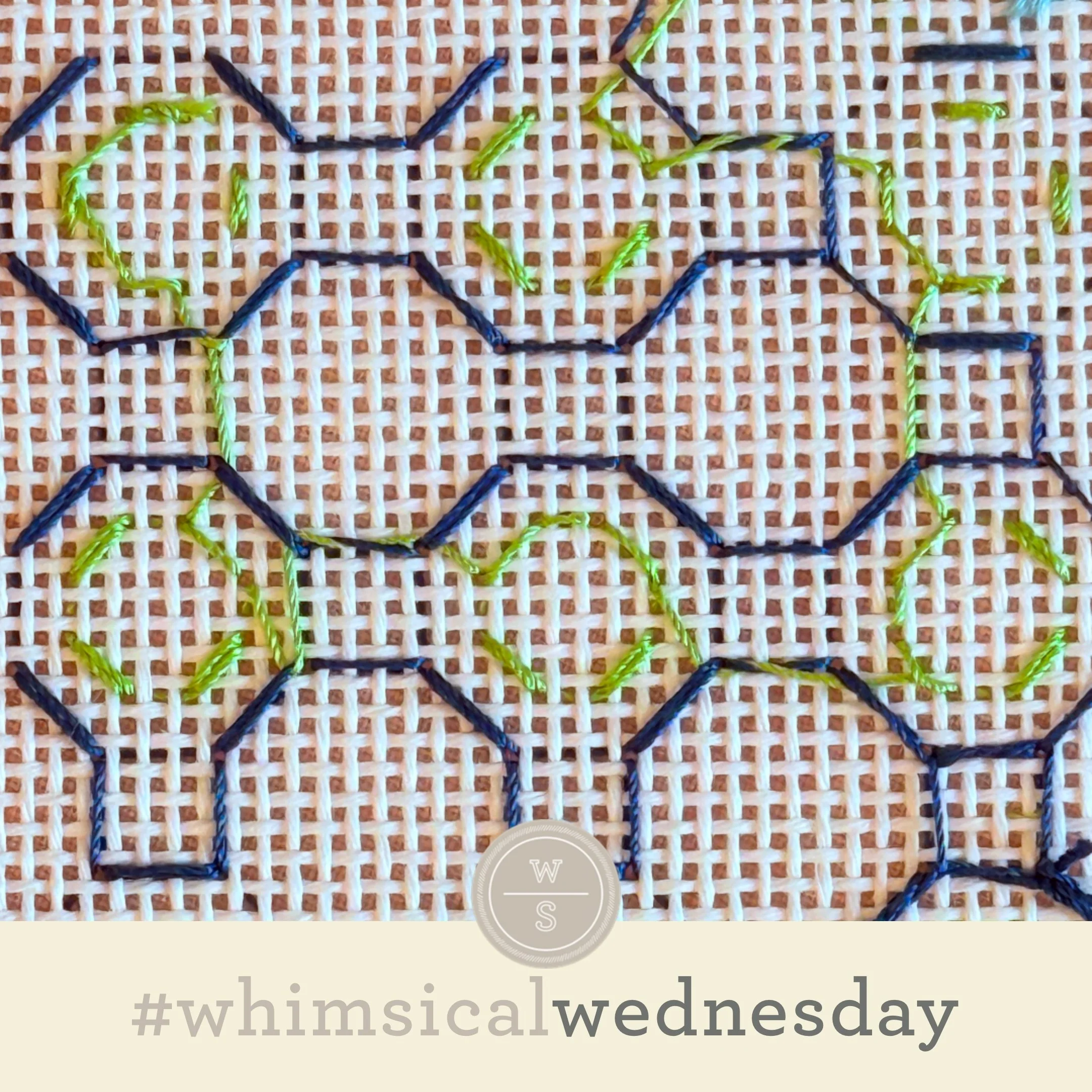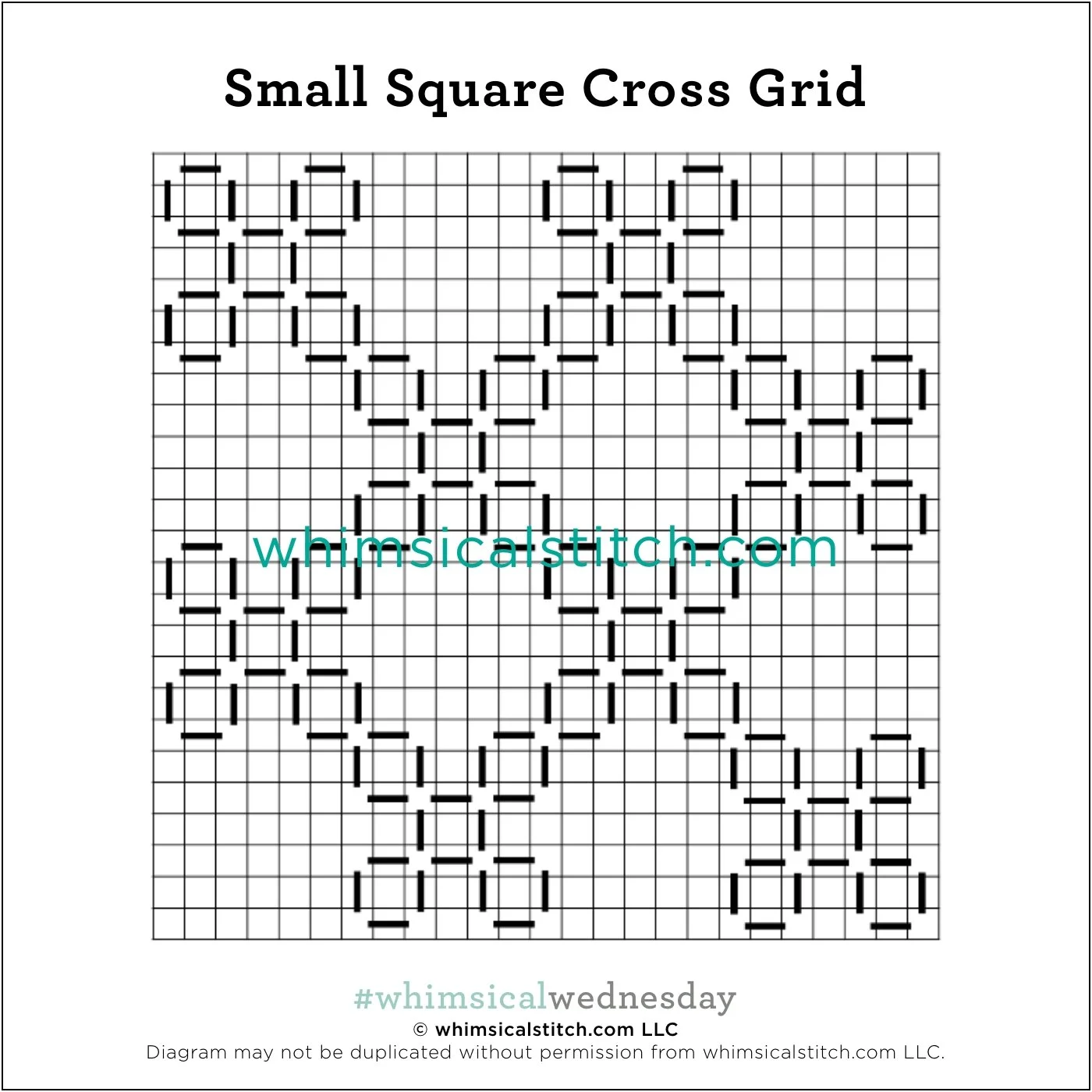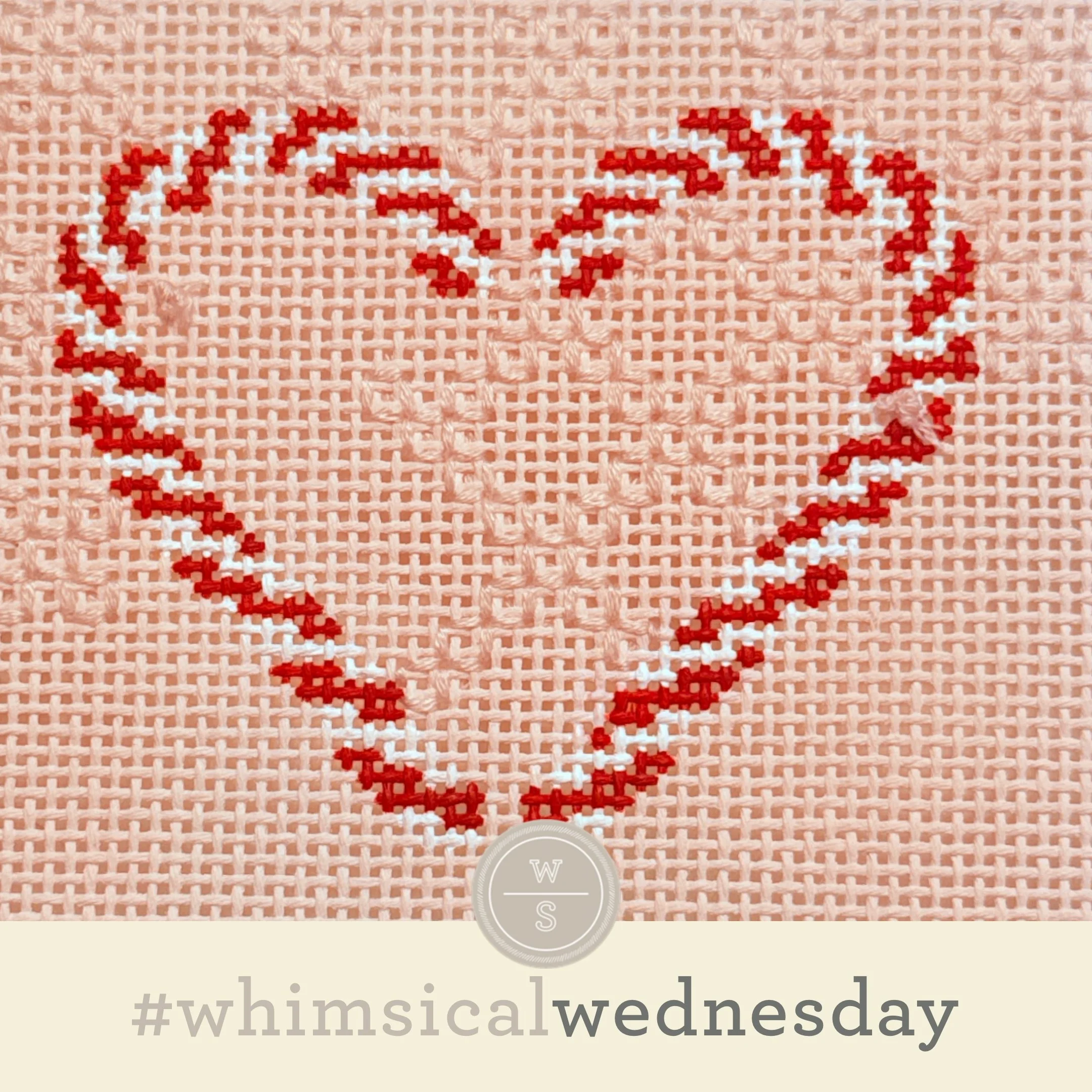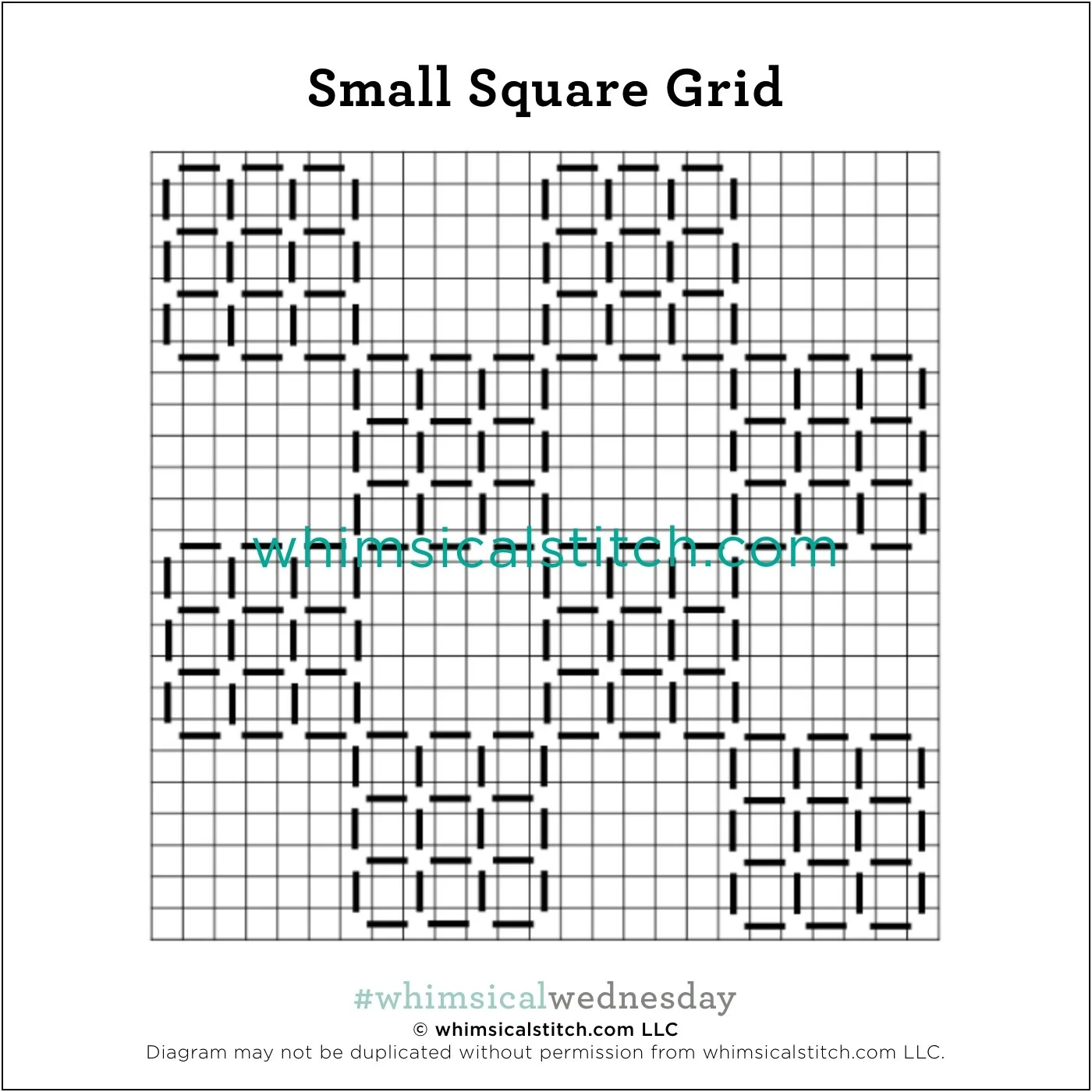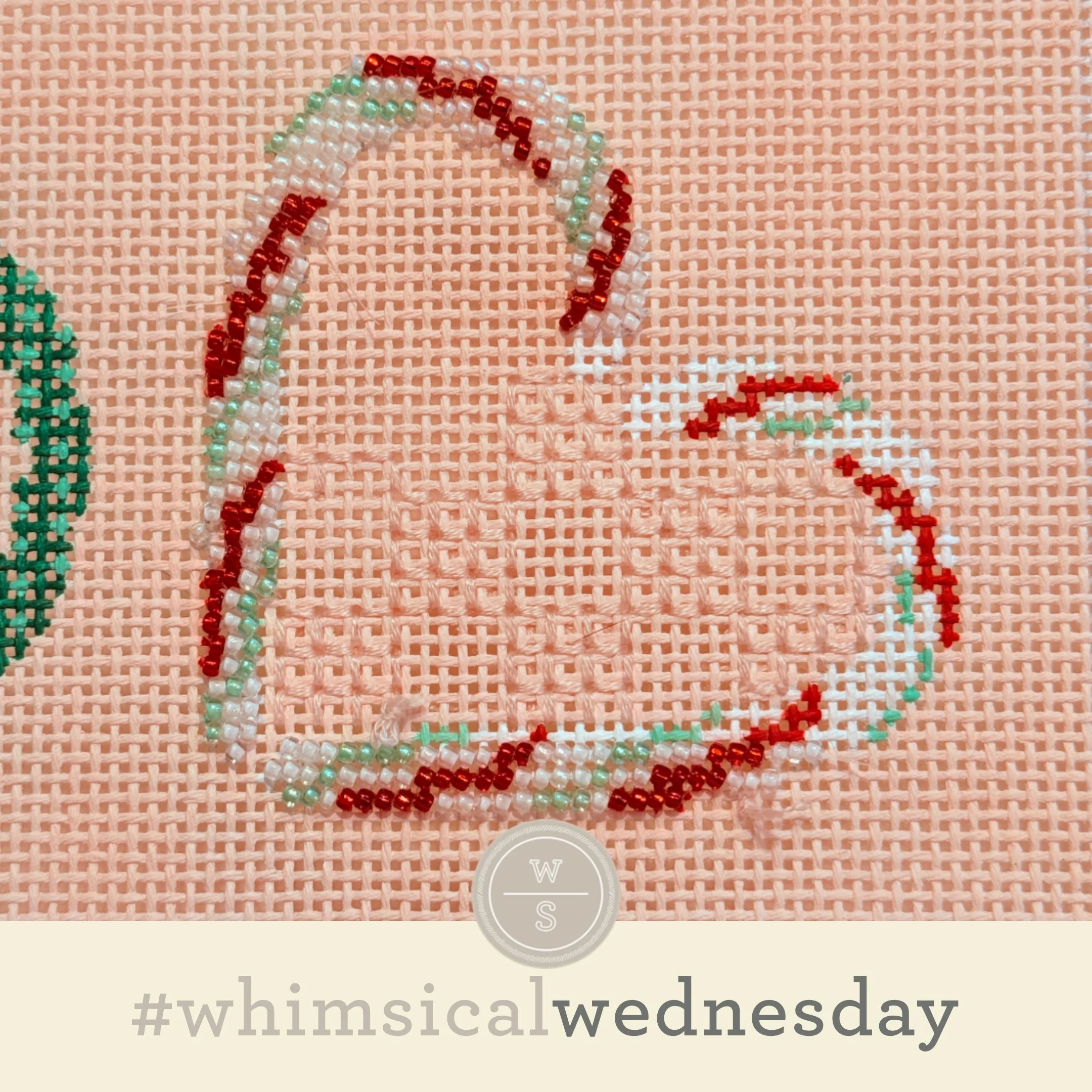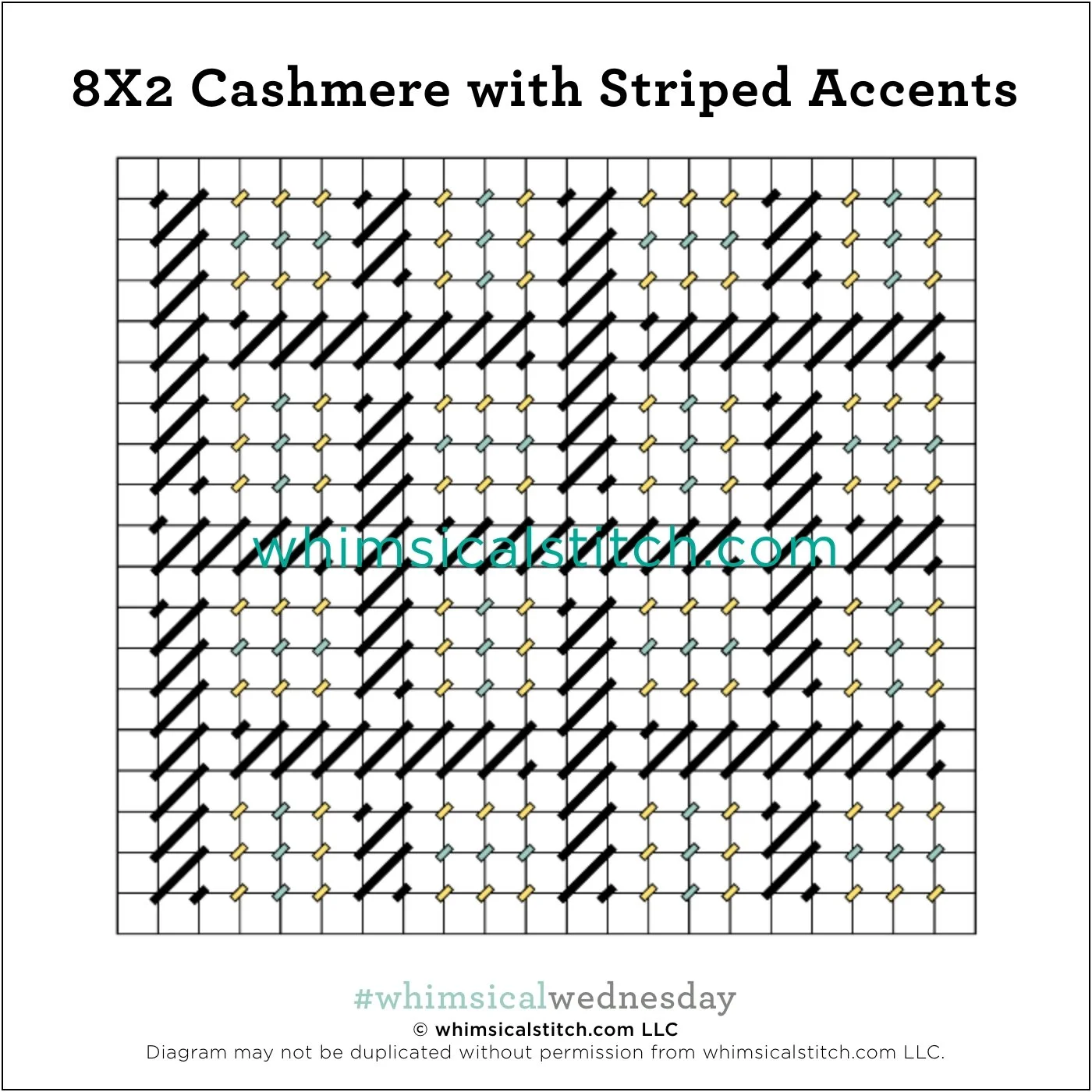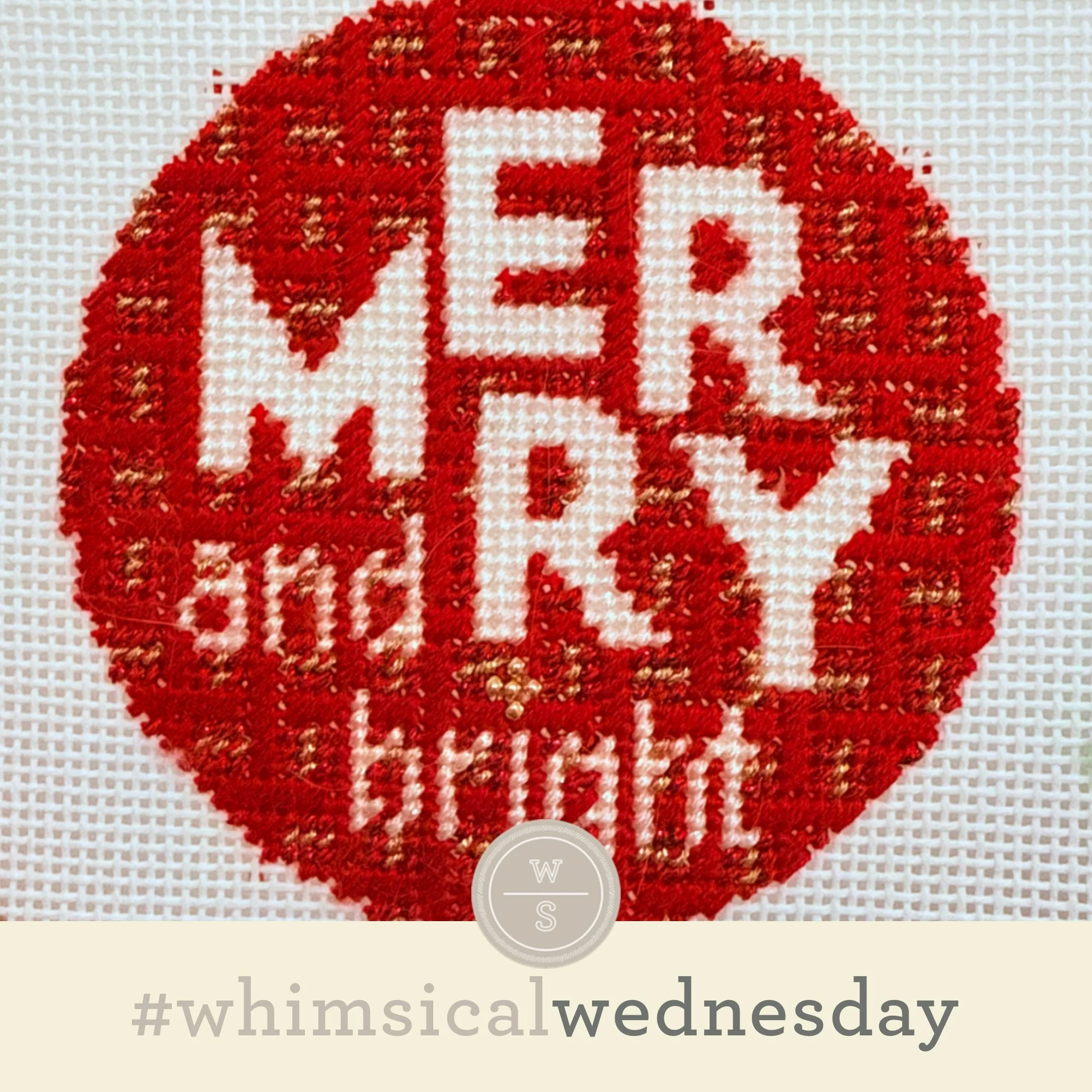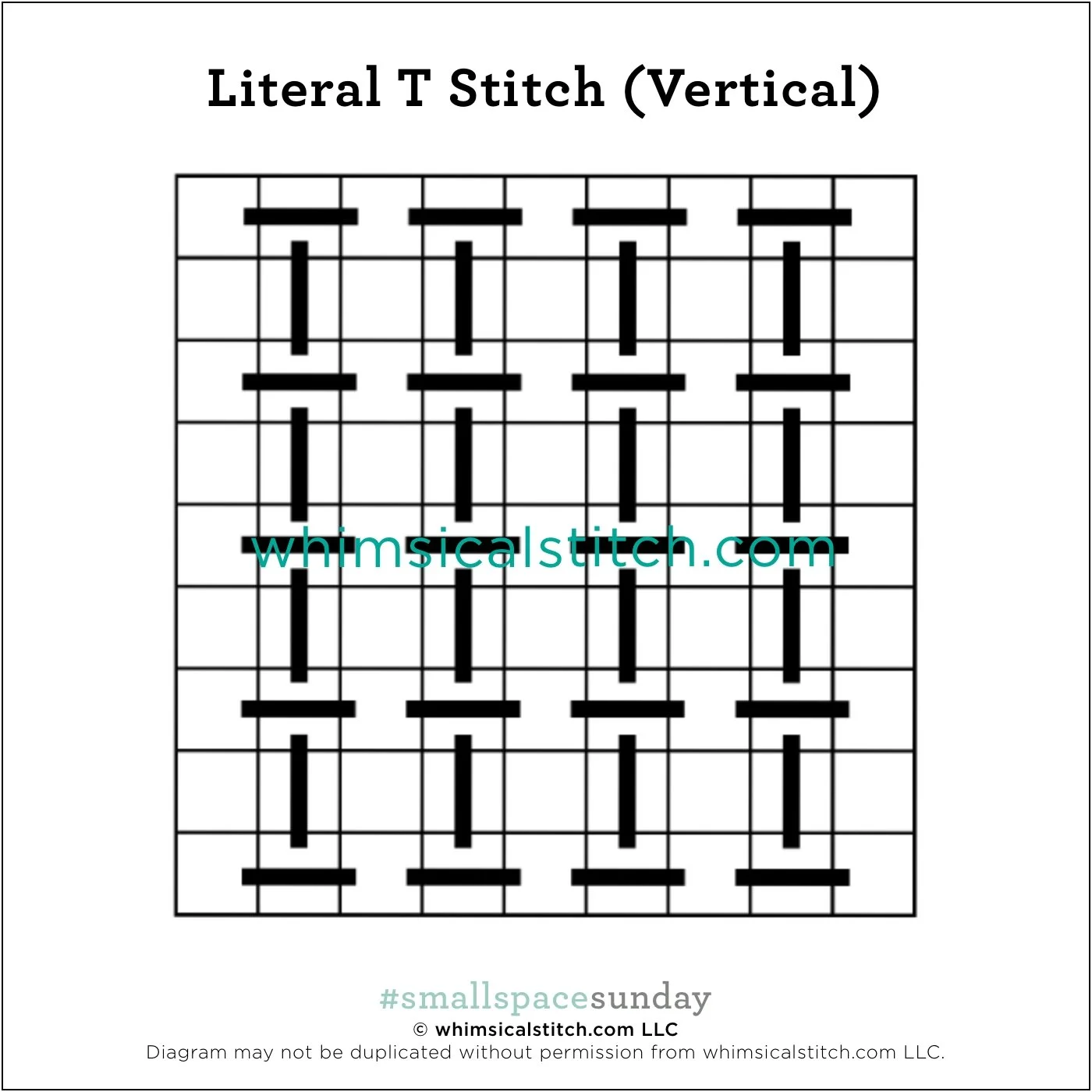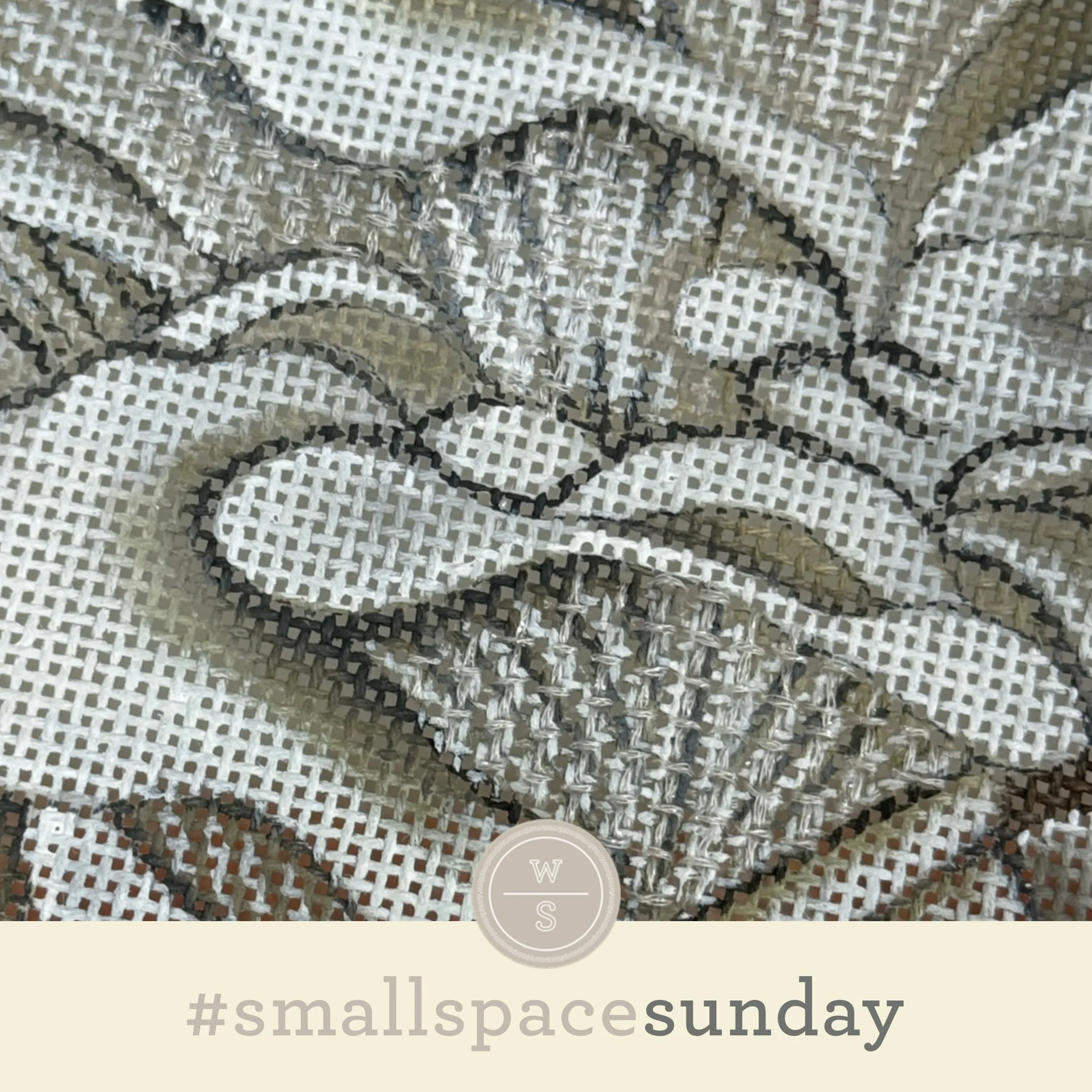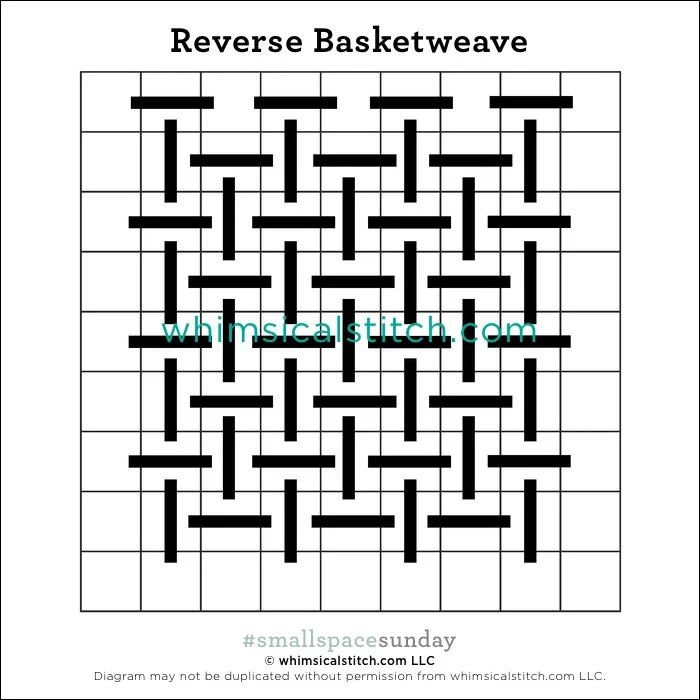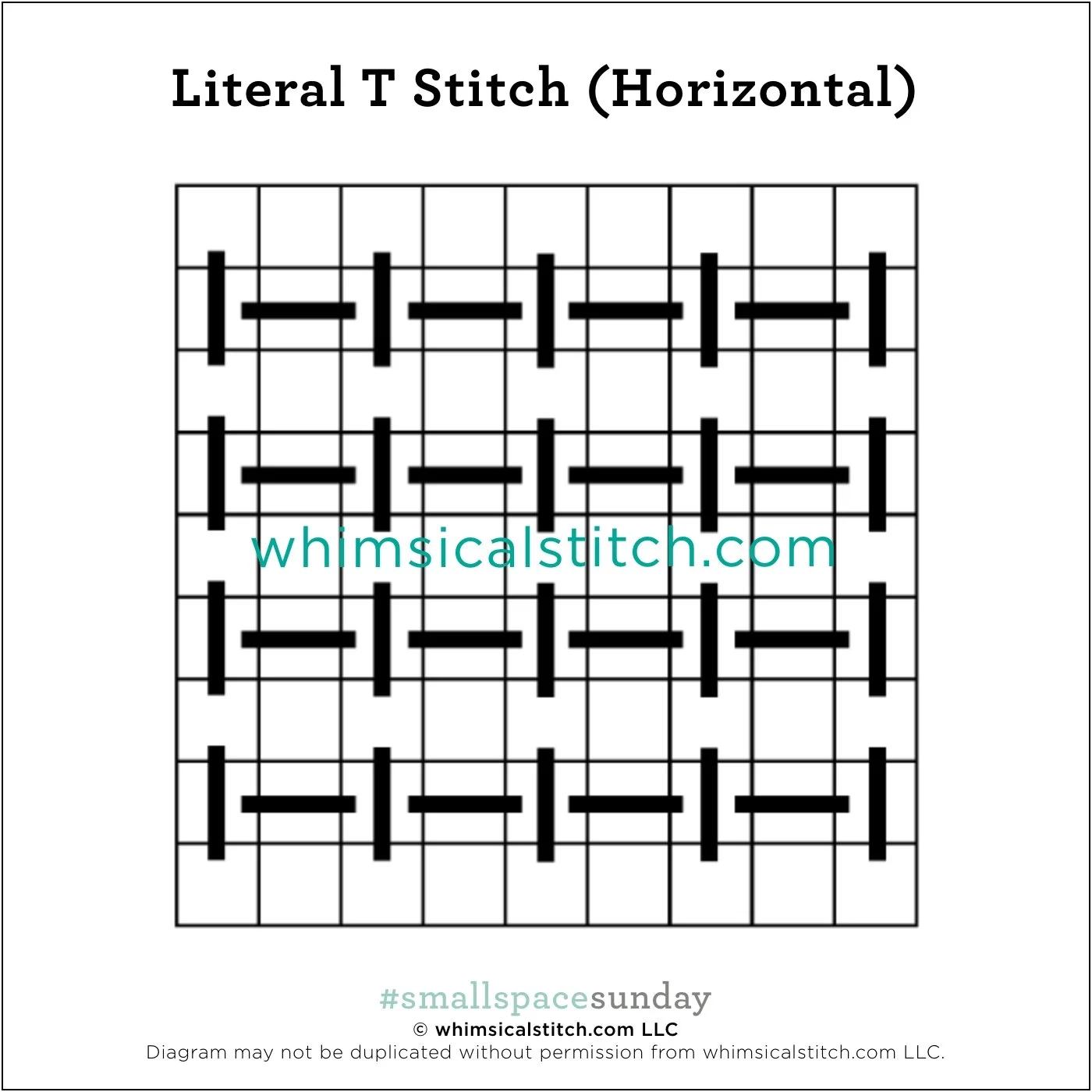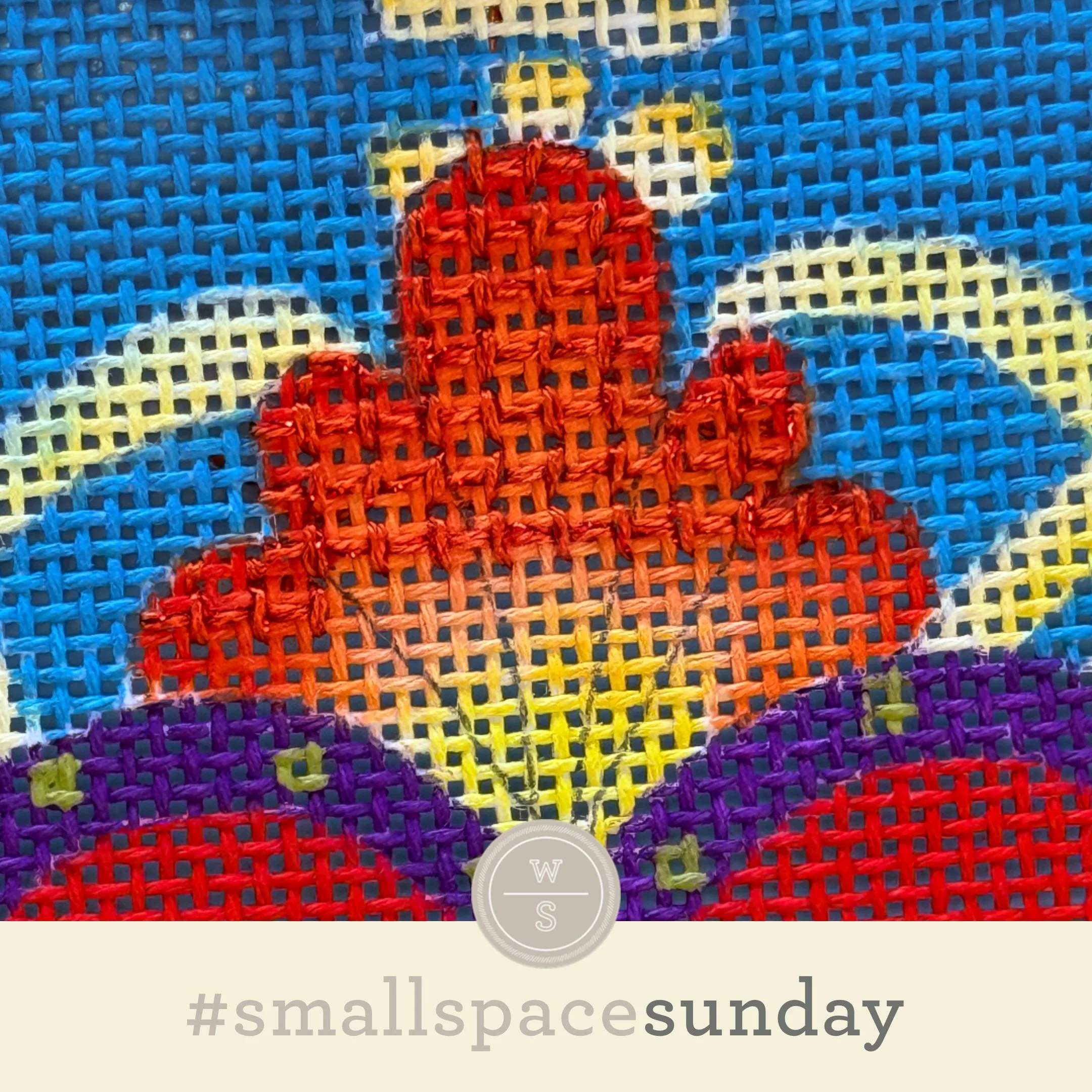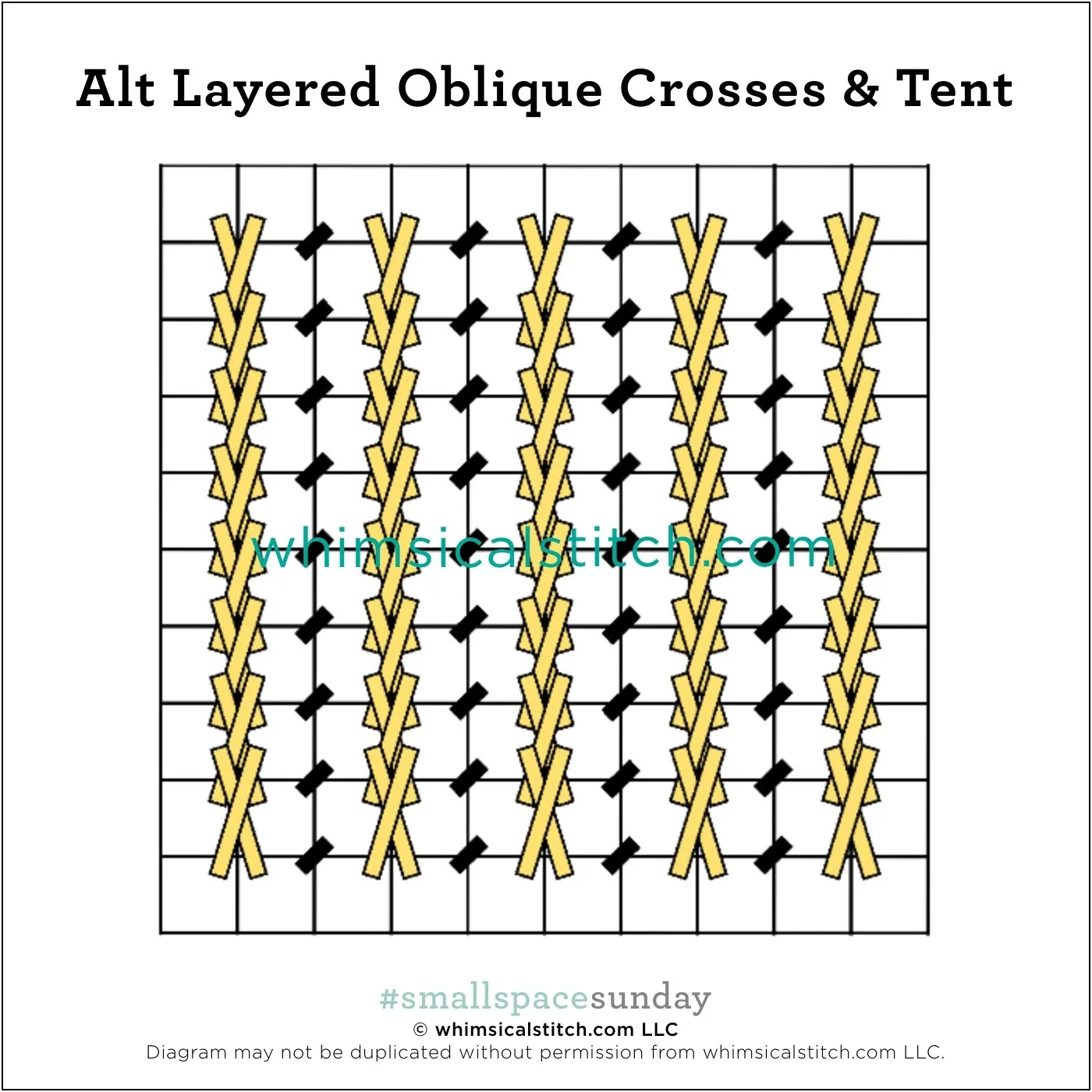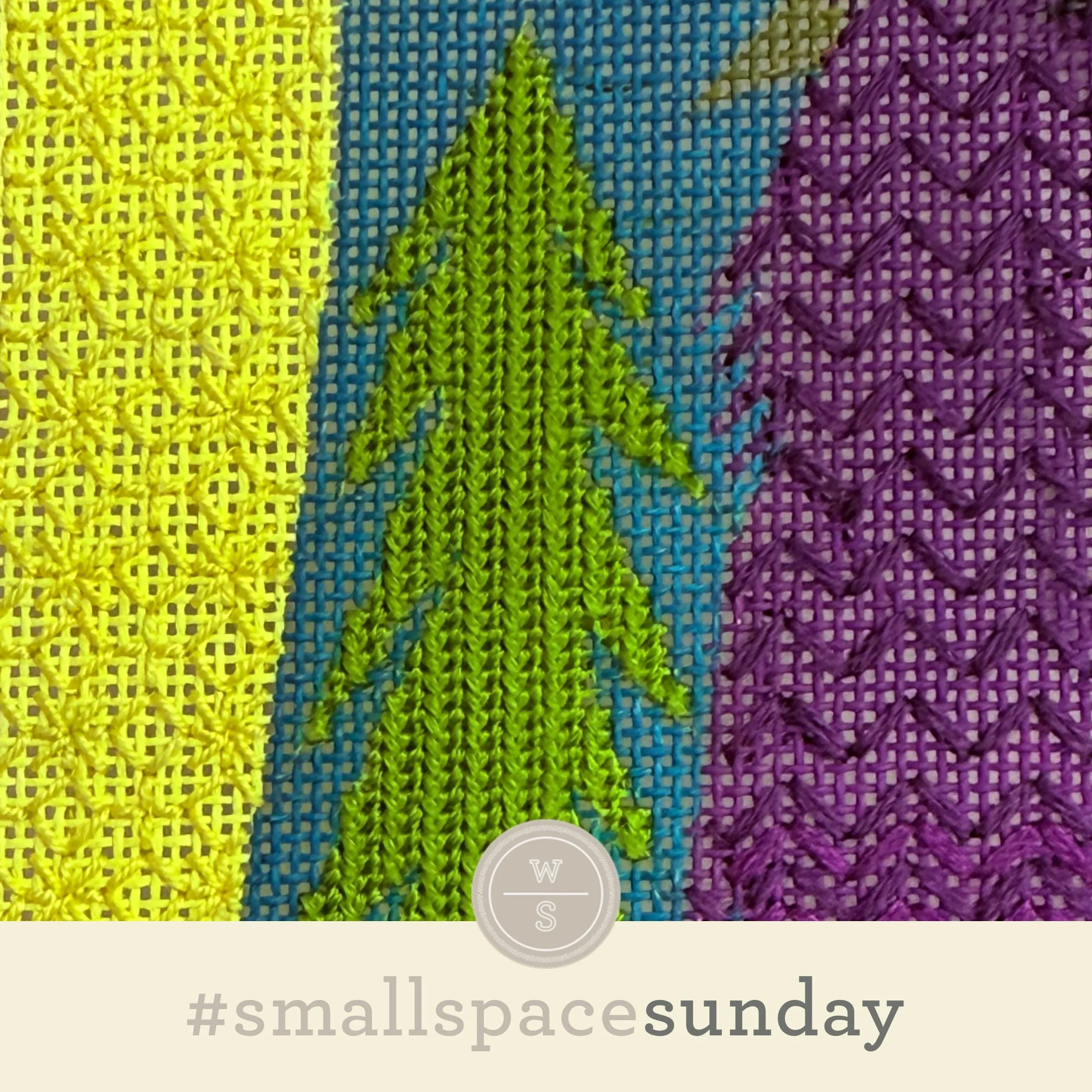I love the simple, tidy look of Chevron stitches. They add a small graphic pop to a stitched piece. (I consider rows of diagonal stitches in alternating directions a classic Chevron stitch.) For today, I started with the idea of offset rows of chevrons. (Um, I’ll get back to you on that.) I ended with layered alternating chevrons. Happy to report that I am intrigued.
As I stitched the first sample with Vineyard Silk (black lines) and Au Ver a Soie Metallic (size 8) (yellow lines), I was convinced that two colors were the only way to go for this stitch. I liked how it reinforced the layering and enhanced the graphic pop of the chevrons. I love the idea of using this stitch for rough water, especially on 18M, with two shades of blue metallic, such as Petite Entice or even ThreadWorx Metallic.
But, despite the fact I was stitching this last night AND had other things to do (sorry, electric bill), I wanted to confirm my hypothesis. I was wrong. I really liked the solid version as well. You still see the layering, but it’s a little more mysterious. I think the solid version will make a wonderful roof with Rainbow Linen or Straw Silk. I also want to play with it for a doll dress with silk floss or Petite Silk Lame.
Important sequencing note. Regardless of how many threads you are using, complete an entire row before you proceed to the next one. Taking this one step further, if you are using more than one thread, you can’t add all of one color first, as each row builds on the previous row. If you are using more than one thread, alternate between the threads as you stitch. You can thread two needles and alternate between them for each row, or you can park threads (away from the stitching area) at the end of a row and pick them up again when you finish a row in the second thread.
This stitch is so much more than the diagram and stitched sample presented here. You can make the diagonal lines longer for a more open space. You can play with adding a small embellishment in the open space between rows.
One last thing. I don’t consider this a diamond stitch, mainly because my focus was on some variation on the Chevron stitch. I bring this up because it was much easier for me to see the stitching paths as chevrons than to create diamonds.
I hope you like it and have fun with it! I have to go pay my electric bill!
As you are auditioning stitches (from any stitch source), count the number of canvas threads on the diagram that match your mesh size. And there you have what an inch of the stitch will look like. Evaluate that against the area where you plan to use the stitch and make your final decision. If you start integrating this step into your stitch selection process, you may be surprised at how many stitches you think are large are much smaller than you realize.
By (sometimes) including this step in my own process, I find I am now integrating much longer stitches than I ever thought I would. I used to think a stitch six rows long was super big. I have very much changed my tune, which has helped me expand my creativity, especially for large-space stitches.
Today’s stitch diagram, along with all other #whimsicalwednesday and #smallspacesunday stitch diagrams, can also be found on a Pinterest board here. Be sure to follow whimsicalstitch.com on Facebook, Pinterest, Instagram, and Twitter.
If you like what you see on this blog, there's more. Mary’s Whimsical Stitches is a series of four books offering contemporary how-to collections of more than 200 stitches (in each volume) for all stitchers, regardless of skill level. All books include updated and sequenced diagrams from this blog, plus a collection of all-new stitches from private lessons and other class projects. Visit here to find a needlepoint retailer that carries my books.
New to needlepoint or looking for a refresher? Please download a handy how-to guide covering basic needlepoint stitches and stitch compensation techniques along with new top-line information on needlepoint materials and tools, how to handle threads, and other helpful needlepoint resources.
whimsicalstitch.com also sells Stitch Guides and Stitch Concepts for Melissa Shirley Designs, Zecca Designs, Sandra Gilmore, Purple Palm, Maggie, and Penny MacLeod, and many more. Click here to see the newest guides and click here to see the entire collection.
I hope you have the perfect spot for this stitch! Please enjoy! Have a wonderful #whimsicalwednesday!
A Note about Diagrams
I use color in diagrams to make them as clear as possible. The primary function of different colored lines is to illustrate a stitch sequence. For example, the layering of colors demonstrates you add them in that order. They can also provide ideas on integrating additional threads (one line for each color). Or, you can use the same thread for all color lines. That's where I encourage you to use your imagination for the space you are stitching!
